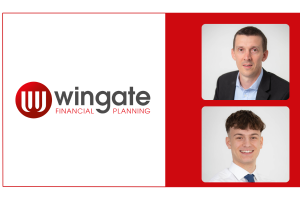If it was a human, the platform sector would be studying for its A levels (or Highers, if it lived in Scotland). It would have started drinking about two years ago, wouldn’t be able to get a Glastonbury ticket for love nor money and would be seriously confused at the concept of a telephone that’s fixed to a wall and doesn’t take pictures.
Yes, it’s now 17 years since what we now recognise as the advised platform sector was born. In that time, some have come and gone. For much of this period, there was a steady stream of new entrants, peaking in the mid OO’s and tapering away by 2011, and of late, the first flurry of sector cannibalisation.
There’s been some bad practices: behind-the-scenes rebate pocketing; interest scarfing (which mattered when interest was higher); pain inflicted on advisers by technology changes and variable service quality, among others.
ORIGIN HAS INFLUENCED PROPOSITIONS
The sector has come to be made up of propositions with a range of origins. Some are product lines of the life company arm of multi-nationals. Some were entrepreneurial start-ups. Some were disrupter brands. Some grew from SIPPs. Others started life as DFM services. And that’s still only some.
This is one of the reasons that it’s so complex and hard to make sense of; the general pattern is that a platform’s origin has a significant bearing on the type of proposition it becomes (although, just to make things even easier, that is not exclusively the case). You have independent wraps that have always had agnostic, whole of market fund ranges and stayed clear of the whole planning tool thing. You have lifecos that very much do the planning tool thing and act as a conduit to the sister company’s fund range (allegedly). A cohort that are particularly good at stockbroking and meeting more sophisticated investment needs. Some that only really do collectives. Some that are basic. Some that are cheap. Some that are expensive. Some that have a big focus on client facing tech. You get the drift.
It means advisers really do have a job on their hands working out which one, or ones, of 25+ can meet the needs of their client proposition(s). The regulator expects whole of market assessment and records to be kept. That’s why due diligence has become such a big thing. It’s an industry in itself for advisers and providers alike.
But, I don’t see how accusations of keeping things hidden can be levelled at platforms. Yes, some are clearer about their target market than others. And in some cases, there can be an annoying tendency to try and be all things to all people – that sort of thing ultimately helps no one. However, when asking questions about proposition, the lang cat has always found that platforms are the most transparent of the markets we assess.
SHAMELESS PLUG ALERT
As an example, we recently launched our very own platform directory and found all of the platforms to be very happy to answer everything we asked (and we only publish a portion of the data) and there’s a further four platforms in the pipeline. Whether it be for adviser due diligence, our own publications or specific research projects, we find that if you are prepared to do the hard yards of primary research, the platforms tend to be open.
Business performance is, as you might expect, less transparent than proposition. But even in this area, reporting of AUA and new business data has been in place for many years, and much of this is passed on to fund groups and advisers by consultancies.
Profit/(loss) measurements are notoriously tricky to truly get to the bottom of, mainly for the platforms nestled among complex business structures, and there are a few who successfully obfuscate. But only a few. And in the long run, I don’t think it does them any good.
TRANSPARENCY WORKS IN PLATFORMS’ FAVOUR
But overall, we generally view platforms as a very transparent corner of the financial sector. Tell me another part of the relatable market where it’s as easy to openly access and compare provider information, especially at no cost?
But it’s not all good. We think it’s much harder for people to get hold of the same level of detail on SIPPs, or personal pensions, or corporate pensions, DFM’s and back office providers. Yet transparency clearly benefits platforms; the easier it is to research a product, the more likely you are to use it. We’d certainly like to see – and are going to try to bring – a similar level of transparency to other areas.
MAKING THE COMPLEX SIMPLE IS WHAT’S HARD
Don’t get me wrong, there’s always more to do. And because they are hoovering up everyone’s assets, platforms do have a responsibility to be ever more transparent.
The issue therefore is not that platforms keep things hidden, it’s that they are complex beasts. No two are the same, they sometimes have different names for the same things, sometimes the lily is gilded and they continue to rapidly develop in all different directions. So, the challenge for the sector collectively; advisers trying to assess them, organisations trying to help advisers assess them and providers themselves, is to keep getting better at making the complex simple enough so that users can make the right decisions.
You can say what you want about platforms. We certainly do. But an establishment-level lack of willingness to share information is not one that I recognise.




